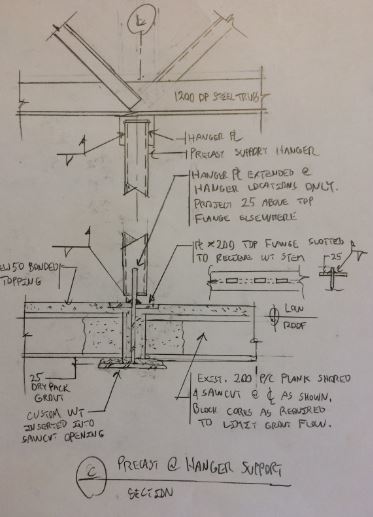I've been engaged to look at a hollow core plank roof that needs to go from 20 PSF to 100 PSF. And probably some additional dead load too. I'd like to round up as many options as I can for strengthening. Here's what I've got so far, acknowledging that many of these options may not actually be viable for such a heavy increase in carrying capacity.
1) FRP on the bottom.
2) Steel strapping on the bottom.
3) External post-tensioning on the bottom.
4) More bonded topping on the top.
5) Parallel beams on the bottom, perhaps acting compositely.
6) A perpendicular beam line to break up the span.
7) An entirely new overbuilt roof structure shielding the plank from load.
8) Permanent sealing and pressurizing of the space below.
9) Very strong opposing magnets on the floor and ceiling below.
Any other ideas worthy of consideration? Come one, come all... Any comments on which of the above might actually be up to the task of a three to four fold load increase?
I like to debate structural engineering theory -- a lot. If I challenge you on something, know that I'm doing so because I respect your opinion enough to either change it or adopt it.
1) FRP on the bottom.
2) Steel strapping on the bottom.
3) External post-tensioning on the bottom.
4) More bonded topping on the top.
5) Parallel beams on the bottom, perhaps acting compositely.
6) A perpendicular beam line to break up the span.
7) An entirely new overbuilt roof structure shielding the plank from load.
8) Permanent sealing and pressurizing of the space below.
9) Very strong opposing magnets on the floor and ceiling below.
Any other ideas worthy of consideration? Come one, come all... Any comments on which of the above might actually be up to the task of a three to four fold load increase?
I like to debate structural engineering theory -- a lot. If I challenge you on something, know that I'm doing so because I respect your opinion enough to either change it or adopt it.


